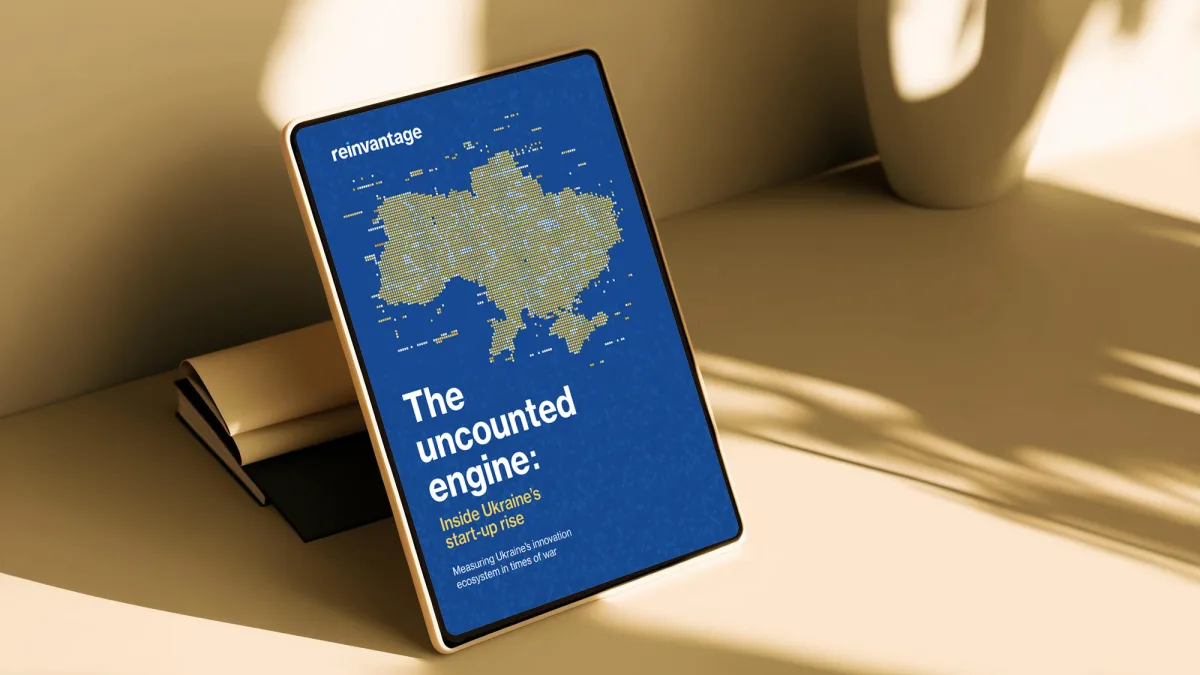In a nondescript building in Luxembourg is the backbone of what might be the world’s most advanced digital government. But it’s doesn’t belong to the Grand Duchy. Instead, what Luxembourg hosts is Estonia’s Data Embassy. It is not an embassy in the traditional diplomatic sense and while the founding agreement does take into account the Vienna Convention on Diplomatic Relations, it is something completely new under international law.
It is fully under the control of Estonia, but has the same rights as physical embassies such as immunity.
That the Baltic state of 1.3 million people has engineered a revolution in public administration that larger, wealthier countries are scrambling to emulate is no secret.
Estonian citizens can perform every interaction with their government online—from voting and paying taxes to checking medical records and registering businesses—usually in a matter of minutes.
This digital utopia wasn’t built by bureaucrats but by entrepreneurs and engineers. Indeed, the Data Embassy is a collaboration between the Estonian government and private sector companies, including Cybernetica, Dell EMC, Ericsson, OpenNode, and Telia.
Simpler, cheaper, easier
When Estonia gained independence from the Soviet Union in 1991, rather than rebuilding a traditional paper-based administration, its leaders made a daring bet on digital. “Estonia was a relatively poor country,” Former President Kersti Kaljulaid said in a recent interview. “Our public sector wanted to offer good quality services. We did it straight away digitally because it was simply cheaper, easy.”
The gamble paid off spectacularly. Today, 100 per cent of Estonia’s public services are available online 24/7. A third of Estonians vote online, and the country estimates the reduced bureaucracy has saved 800 years of working time.
The digital ID system that underpins this ecosystem allows citizens to securely access services and sign documents electronically, creating efficiencies that save the country an estimated two per cent of GDP annually.
Estonia’s success represents the vanguard of a rapidly expanding market for government technology—or GovTech—that is poised to reshape how citizens around the world interact with public institutions.
The two trillion US dollars opportunity
For decades, governments worldwide have been notorious for clunky interfaces, siloed systems, and mind-numbing inefficiency.
Citizens have resigned themselves to long queues, redundant paperwork, and Kafkaesque bureaucracy as simply the cost of dealing with a state. But a potent combination of factors—technological maturity, fiscal pressures, and soaring citizen expectations—has created a perfect storm for disruption.
The GovTech sector—where private companies develop innovative technological solutions for public sector challenges—is experiencing explosive growth. The global GovTech market was valued at 615.6 million US dollars in 2024 and is projected to reach 2.3 trillion US dollars by 2033, exhibiting a compound annual growth rate of almost 16 per cent.
This outpaces other buzzed-about sectors such as FinTech or cybersecurity, making it one of technology’s most promising frontiers.
Driving this remarkable expansion are citizens who increasingly expect government services to match the seamless digital experiences they encounter in their everyday lives—from one-click shopping to ride-hailing apps.
Meanwhile, governments face mounting pressure to do more with less as populations age and fiscal constraints tighten. GovTech offers the prospect of squaring this circle: better services at lower costs.
“The Covid-19 pandemic was a watershed moment,” says Michael Redford, a consultant for government-focused venture capital firms. “When physical offices shut down, agencies that had resisted digitalisation for years suddenly found themselves with no choice but to modernise. What might have taken a decade happened in months.”
Private ingenuity, public purpose
The central premise of GovTech is that the private sector—with its focus on user experience, agility, and innovation—is better positioned than government to develop cutting-edge solutions to public sector challenges.
This represents a significant shift from traditional government IT procurement, which typically involved lengthy contracts with established systems integrators rather than nimble start-ups.
The key benefits of GovTech adoption include time savings for government workers, automation of routine tasks, reduced costs for implementing projects, and smoother, paperless government communications. These efficiencies can transform both internal operations and citizen-facing services.
In San Francisco, an urban accelerator programme connects city government teams with innovative start-ups to tackle specific municipal problems. Amsterdam has replicated this model with its Start-up in Residence Programme, while Madrid is currently piloting innovative solutions across five cities in the region.
Even traditionally cautious jurisdictions are embracing this collaborative approach, recognising that bureaucratic inertia is a greater risk than technological experimentation.
There has long been a fundamental misalignment in how governments typically procure technology. Traditional procurement processes were designed for buying tanks and staplers, not software-as-a-service. The rules often prevent agencies from accessing the most innovative solutions.
This mismatch has created opportunities for a new breed of intermediaries specialised in bridging the gap between government needs and private innovation. These organisations function as matchmakers, running challenges that frame public problems in ways that attract entrepreneurial talent and investment.
The results can be remarkable. When Singapore sought to improve its urban transportation, it didn’t commission a traditional consulting study—it launched a competition that attracted solutions from start-ups worldwide. The winning approach combined AI and sensor data to optimise traffic signals, reducing congestion by 18 per cent in pilot areas.
Estonia’s playbook: How to build a digital society
Estonia stands as the ne plus ultra of GovTech implementation, having transformed itself from a post-Soviet economy into what another former president, Toomas Hendrik Ilves, has dubbed “the most advanced digital society in the world”. How did this tiny nation manage what larger, wealthier counterparts have struggled to achieve?
The answer lies in a combination of bold leadership, innovative policy frameworks, and purposeful collaboration with the private sector. When Estonia began its digital transformation, it lacked the resources to build complex systems in-house.
Rather than seeing this as a limitation, Estonian leaders made a virtue of necessity, creating an open architecture that allowed private companies to develop services on top of core government platforms.
Estonia’s case is “a success of a national strategy rather than of a single policy or even a bundle of programmes.” Analysts have noted that “the Estonian digital transformation is characterised by ‘development-driven strategies’ rather than by ‘strategy-driven development.'” In other words, Estonia allowed practical innovation to drive policy, not the other way around.
The linchpin of Estonia’s approach is its digital identity system, which provides citizens with secure, authenticated access to both public and private services. Unlike many government IT projects that create closed ecosystems, Estonia built an open platform that private companies could integrate with and build upon. This public-private collaboration has created a virtuous cycle of innovation, with companies continually developing new applications for the digital infrastructure.
Estonia’s digital society, which began with the widespread rollout of ID cards in 2003, has raised the bar for what future generations expect from their government. The private sector’s focus on innovation and user-friendly services has set a high standard, pushing the public sector to adapt accordingly.
Perhaps most remarkably, Estonia’s digital transformation has achieved what many thought impossible: making government services not merely tolerable but genuinely user-friendly.
From e-Government to GaaS
The next frontier in GovTech extends beyond digitising existing services to reimagining the very nature of government. Some visionaries speak of ‘Government as a Service’ (GaaS)—a model where public administration functions as a platform that both provides core services and enables an ecosystem of private innovation.
This approach treats government not as a monolithic provider but as an enabler of services that might be delivered by various actors. Just as ride-sharing platforms don’t own cars but facilitate connections between drivers and passengers, future governments might focus on maintaining secure identity, data, and regulatory frameworks while allowing a competitive marketplace of providers to deliver many services.
Estonia is already sprinting toward what it calls a ‘fully personalised state’ within the next decade. This approach, which puts citizens at the centre, represents a complete reimagining of governance, not merely an upgrade to existing systems.
The concept is already taking shape in various experiments worldwide. Singapore’s Moments of Life initiative aims to anticipate citizen needs based on life events rather than requiring people to navigate different agencies. Having a baby? The system proactively offers registration, healthcare options, and childcare information in a single interface. Buying a home? It seamlessly connects mortgage approval, utility setup, and address changes.
The risks of the silicon state
The GovTech revolution, for all its promise, comes with significant challenges—often centered around trust. As governments outsource more functions to private technology providers, questions arise about accountability, sovereignty, and the public interest.
A key conflict emerges between private providers and the state, as private companies may lobby for the adoption of digital services they’ve designed, potentially steering the sector toward services that help them retain market power rather than those that would generate more fiscal revenue in a competitive environment.
There are also profound concerns about equity and access. To avoid a GovTech sector that doesn’t serve citizens on the wrong side of the digital divide, governments must ensure that enabling infrastructure and public services are available to virtually all constituents. Otherwise, digital transformation risks exacerbating existing inequalities.
Privacy and security considerations loom equally large. When Estonia suffered a major cyberattack in 2007, it underscored the vulnerability of digital societies to new forms of disruption. Though the country’s systems proved resilient, the incident highlighted the importance of robust safeguards and sparked Estonia’s leadership in NATO’s Cooperative Cyber Defence Centre of Excellence.
Moreover, as artificial intelligence increasingly powers government services, concerns about algorithmic bias and transparency become paramount. Who designs the algorithms that determine benefit eligibility or predict recidivism? How can citizens challenge automated decisions? These questions will only grow more pressing as GovTech evolves.
The art of the possible
Despite these challenges, the trajectory of GovTech appears inexorable, and the most profound impact may be psychological rather than technological. By demonstrating that government services can be efficient, responsive, and even pleasant, GovTech pioneers like Estonia have shifted expectations about what’s possible in public administration.
“We’ve accepted mediocrity from government technology for so long that we’ve forgotten to demand excellence,” says Michael Redford. “The real revolution isn’t the technology—it’s the belief that citizens deserve better.”
As nations worldwide confront mounting challenges—from climate change to ageing populations—the need for more efficient, effective governance has never been greater. The GovTech revolution offers a vision not bigger of more government, nor less government, but smarter government—one that leverages private sector innovation to deliver public value more effectively than ever before.
Estonia’s example shows this isn’t a techno-utopian fantasy but an achievable reality—provided governments are willing to reinvent their role, embrace private sector innovation, and put citizens at the centre of their digital transformation efforts. The question is no longer whether governments will digitise, but how quickly, and to what end.
For citizens long accustomed to the drudgery of bureaucratic encounters, that future can’t come soon enough. After all, as Estonia has proven, the most revolutionary aspect of GovTech may be something utterly mundane: making government work as well as everything else in our digital lives.
Photo: Dreamstime.







